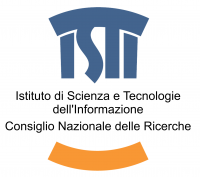A roundtable is a panel of speakers addressing a specific topic or issue, coordinated by one or more session organizers. Presentations of the panel members will normally be followed by a discussant and general discussion with the audience. This is similar to, but more formal in nature, than a focus session. The panel members will be limited to 10 to 15 minutes for their individual presentation (determined and informed by the session organizer) and may or may not include Powerpoint slides. The discussant(s) will address each of the individual presentations; drawing conclusions and identifying connecting themes. The discussion will then be opened to the audience and be moderated by the session organizer(s).
Tips:
- As a panel member, consider using only a few good slides in your individual presentation. Since the focus of a roundtable is to stimulate an exchange of ideas between the panel members and the discussant(s), a formal highly technical presentation is not necessarily the best tool. It may be better to consider it in the same light as a focus session presentation.
- As a discussant, look for the common themes running through each of the panel member’s presentations and how they relate to your research and experience. You were chosen as a discussant on the basis of your expertise, so be sure to bring that to the discussion in a way that helps the panel members apply it to their own research. Part of the point of the roundtable format is to illustrate the process of scientific exchange for the audience.
- As an audience member you may not have as much opportunity to participate in the discussion as you might in a focus session; it will depend on how much time is available. However, if you do participate in the discussion, keep your questions focused on the topics under discussion; so as to move the conversation forward and not sidetrack it. Give others the opportunity to speak as well; especially since time may be limited.
Roundtables list
- Challenging Digital Archaeology – the discussion continues
- Arches Heritage Inventory and Management System
- The whole is other than the sum of its parts: where is the spatial data infrastructure for cultural heritage?
- Simulating the Past: Complex Systems Simulation in Archaeology
- Linked Open Data Applied to Pottery Databases
- Thinking between the lines: conceptualising the future of archaeological databases
- Digital Technologies and Quantitative Methods in the Study of Prehistoric Art


